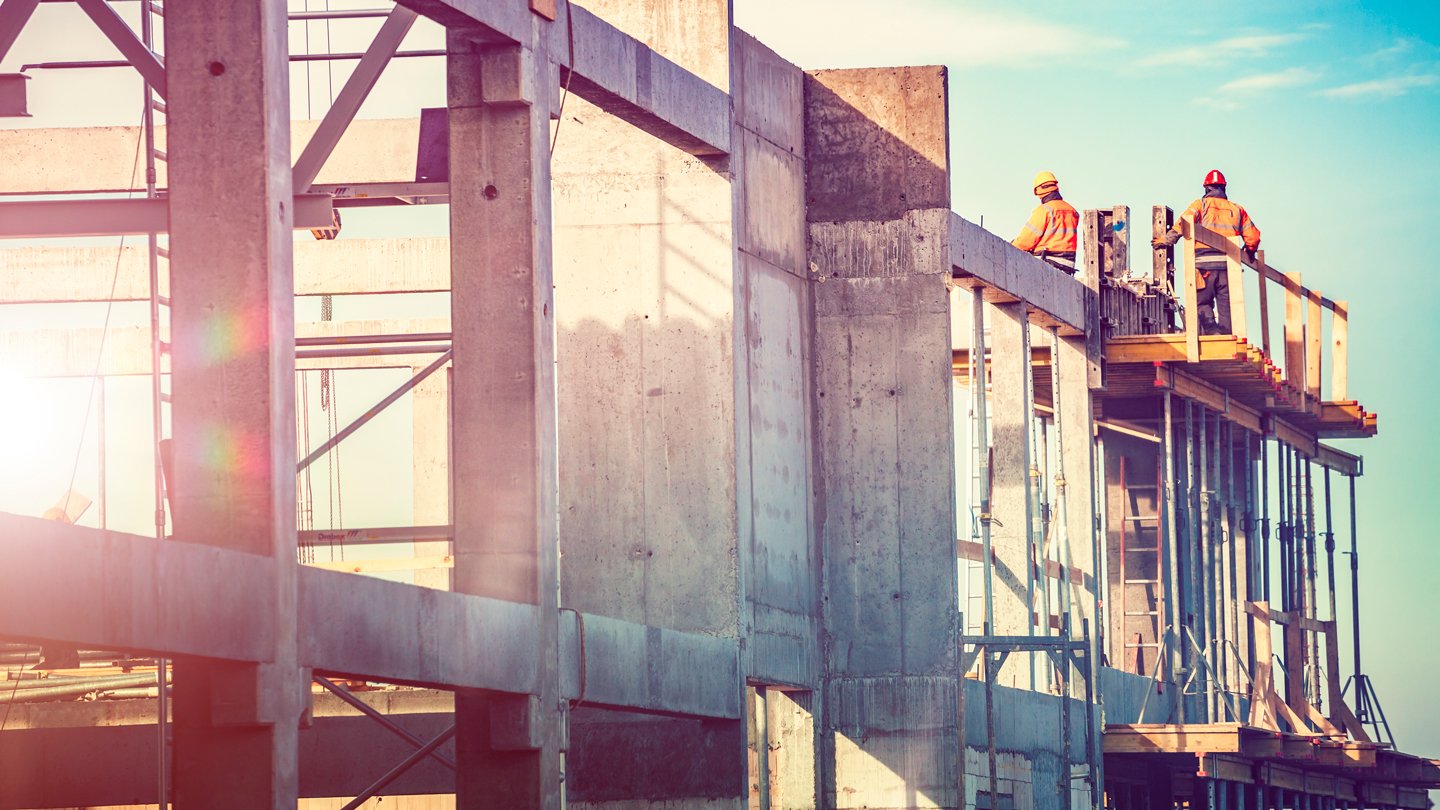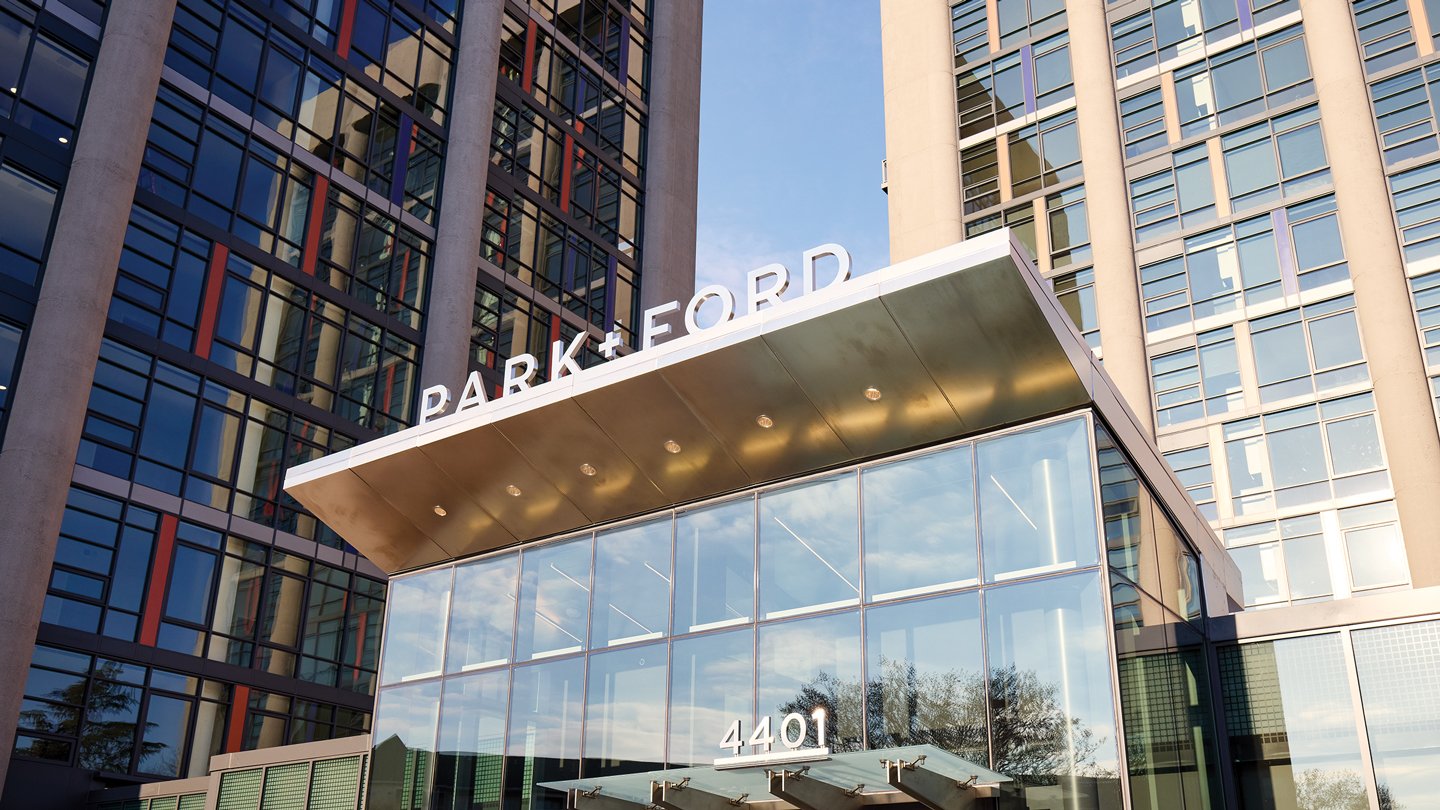How E-Commerce Affects Urban Industrial Lands and Transportation Systems

Quick-delivery services could have a significant impact on streets, curbs and parking in cities.
The closure of many retail stores that started in spring 2020 due to the COVID-19 pandemic rapidly accelerated the growth trajectory of e-commerce. But how does this structural shift in consumption patterns impact industrial lands and transportation systems in cities?
Based on a new study completed for the Metro Vancouver Regional District by Colliers’ Strategy & Consulting Group, this article outlines how the rapid growth in e-commerce is affecting urban logistics systems, particularly land uses and transportation modes. Informed by a literature review, stakeholder interviews and case studies, it summarizes the latest e-commerce trends and issues, with suggestions for land use and transportation planning that municipalities, agencies, operators and developers should consider.
E-commerce is rapidly changing how supply chains and goods shipping are managed. Traditionally, transportation stages entailed the movement of goods from a warehouse/distribution center (where goods are stored) to a fulfillment center (operated by a third-party handler) and eventually to a store. The rise of e-commerce and direct-to-consumer delivery has added demand to the industrial real estate market, urban freight corridors and curbside delivery spaces. In some places, this has also led to “dark stores” — retail facilities that resemble a conventional store, but instead house goods for online order fulfillment.
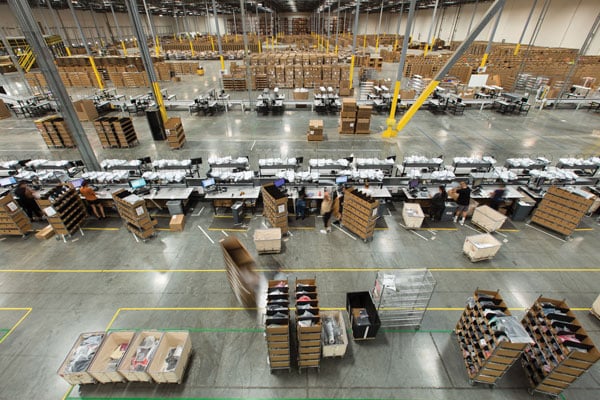
Modern e-commerce logistics facilities typically use three times more labor than traditional warehouses.
For decades, retail was an industry that could schedule fulfillment seasonally. Orders with manufacturers were placed months in advance, goods were shipped in bulk, then sorted and distributed to stores. With the advent of e-commerce, much of the inventory ordering is done directly by consumers, resulting in more sporadic, unpredictable ordering patterns. This complicates the fulfillment process.
To mitigate delivery issues and prevent delays, distributors are storing more ready-to-ship products in distribution centers and warehouses, resulting in increased demand for industrial real estate. When a layer of rapid delivery is applied, it becomes crucial to have products available close to dense urban centers where consumer demand resides.
Urban areas often have complex, dynamic networks of transportation corridors and land uses. E-commerce activities that aim to give customers faster deliveries are disrupting these systems, and the amount of consumer goods flowing through cities is straining supply chains and logistics networks. In many cases, vehicle congestion is increasing, along with conflicts over street and curb space.
Satisfying Consumer Expectations
Consumers are demanding fast, cheap deliveries. Larger operators like Amazon that set consumer expectations can increase the reliability of their supply chains, while smaller actors must find their own innovative and nimble delivery solutions. This increasingly includes a mix of elements such as e-cargo bikes, gig workers and distribution hubs.
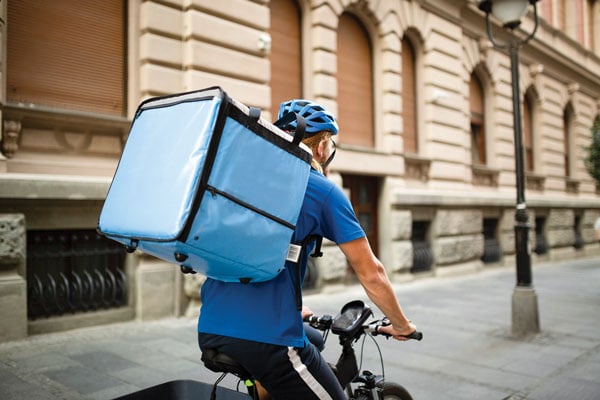
Bicycles could help expedite last-mile deliveries in dense urban areas. However, they are limited in the amount of goods they can transport.
Generally, the delivery of e-commerce goods to consumers can be broken down into three stages: first mile, middle mile and last mile.
First mile. When consumer goods arrive in a region, their first stage of transportation is known as the “first mile.” Traditionally, goods arriving by sea, rail, truck or air are transported to warehouses, then to retail stores for purchase.
Middle mile. This stage of the transport system entails the movement of goods from a warehouse/distribution center to a fulfillment center or retail store. This leg of the journey moves the product closer to the end destination, without delivering it to the customer. The definition of the middle mile is expanding with the rise of e-commerce and expectations of rapid home delivery. This has evolved in recent years to be more urbanized, with new route options from warehouses to microhub fulfillment (dark stores) or distribution centers, as well as from one store to another to fulfill “click-and-collect” orders.
Last mile. The last mile is delivery to the end consumer. When ordered online, delivery is typically completed by corporate operators or gig-delivery workers via courier vans, e-cargo bikes or other means.
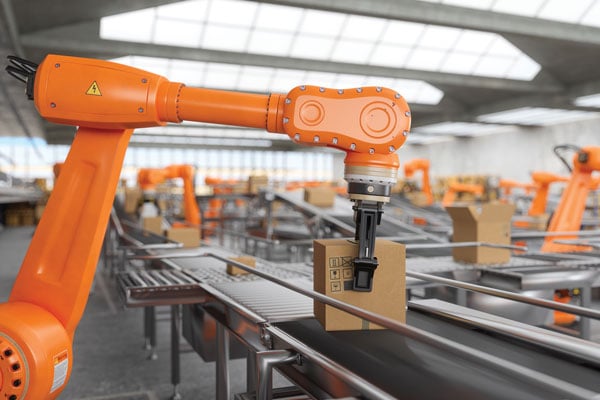
Automation in e-commerce fulfillment facilities could reduce labor requirements by up to five times, but it is currently too expensive for all but the largest operators.
Methods of optimizing these stages are a point of distinction between large retailers/distributors (such as Amazon or Walmart) and smaller ones. Larger operators can introduce economies of scale, such as company-owned truck fleets, resulting in competitive advantages that are expected to endure.
In all cases, goods are being delivered via public infrastructure such as roads and sidewalks. A major challenge for the modern economy is how to use and share this infrastructure efficiently.
Operational Impacts and Implications
Curbs and sidewalks have emerged as major congestion points for the rise of e-commerce. Delivery companies need ample and immediate access to the curb to unload quickly. This demand for curb space conflicts with conventional uses such as parking, cycling, transit and garbage collection.
Much like the congestion and conflicts sparked by ride-hailing, e-commerce delivery is creating a much greater need for comprehensive loading and parking strategies.
In response, more municipalities and parcel delivery companies are exploring cargo bikes and e-cargo bikes as last-mile delivery services. The potential benefits of switching from traditional delivery vehicles to cargo bikes include lower emissions, less vehicle congestion and better access to dense urban areas.
However, while individual cargo bikes take up less space than vans, they have a substantially lighter load capacity. With fewer parcels being delivered on each route, the cost per unit is significantly higher. E-cargo bike fleets may help alleviate these issues, as they can more easily be implemented as an alternative or supplement to traditional vans and trucks.
Drone delivery and self-driving vehicles, while much discussed, are not immediately feasible in most contexts. However, in the longer term, they may be solutions to the labor and congestion issues that many cities face.

Parcel pick-up boxes in both multifamily and commercial buildings can cut the time required to complete a delivery and reduce parcel theft.
Municipal land use plans once dictated the location of industrial and logistics activities, but new innovations are being led by e-commerce firms. With ever-growing consumer demand for quick delivery, companies want to be as close to their consumers as possible. Innovative operators are trying to fit into urban locations through solutions such as shipping containers in parking lots, dark stores or logistics hotels, which are purpose-built facilities that consolidate multiple logistics-related uses and companies in order to offer more efficient and cost-effective operations.
Due to the high demand for urban industrial space, some companies are also splitting their supply chain operations into different locations throughout a city-region. One example is IKEA, which started opening smaller retail locations within some city centers while maintaining their suburban stores as fulfillment centers.
The building height requirements for e-commerce warehousing and distribution centers are increasing due to the taller racking required to store goods. The higher the racking, the more items that a building can hold for later delivery to consumers. Many newer industrial buildings in suburban locations have ceiling heights of 36 feet or higher, whereas older buildings are as low as 12 feet. The redevelopment of older industrial districts can increase their capacity and make them more marketable to a wider variety of tenants.
Cities only have a finite amount of land. As the demand for urban space close to customers and the workforce drives up rents, smaller industrial users that can’t compete are forced to peripheral locations. This challenging market is favoring large distributors who can pay for coveted locations. As some traditional industrial uses are driven further away from the urban core, workers are forced to travel further distances to these relocated jobs, also impacting the transportation network.
Key Themes and Findings
The research and stakeholder informational interviews identified several key issues.
- From a retailer perspective, curbside-management strategies help to improve the efficiency of deliveries. Time spent finding parking is time lost. As a result, many drivers are illegally parking. Municipalities need to consider this when developing curb-management and street-parking policies.
- E-commerce delivery places significantly more demand on curb space than other new services such as ride hailing. This is due to the additional time required for delivery personnel to access the building, and in some cases travel to an upper floor.
- Current traffic data can be inaccurate and unreliable for future predictions. This is because of the difficulty in distinguishing between background traffic and “invisible freight” gig-delivery workers in private automobiles.
- The logistics industry is trending toward larger vehicles to reduce labor requirements, which may reduce the amount of traffic but means larger trucks on the streets.
- Mass transit stations are excellent locations for microfulfillment hubs and parcel pick-up boxes.
- Parcel boxes in both multifamily and commercial buildings reduce the time required to complete a delivery. In addition to reducing curb demand, these boxes have the added benefit of reducing parcel theft.
- Greater adoption of cargo bikes requires specific modifications to current transportation infrastructure. Standard bike lanes are generally not wide enough to accommodate cargo bikes. Wider lanes and additional buffers are needed to facilitate cargo bike delivery. Furthermore, there is often a lack of parking options. Dedicated courier/delivery bike parking could improve efficiency, particularly during summer months when bike racks fill up.
- As a result of consumer expectations of rapid delivery, significantly more middle-mile shipping is occurring with partially filled trucks. This leads to lower overall utilization of truck cargo space, more deliveries per truck, more traffic and more pollution.
- The consolidation of goods, or group shipping, is one of the most effective methods of reducing carbon emissions. Rather than a van making several deliveries during a week to the same street, consolidation could result in multiple packages all delivered on one day. However, this eliminates “within 15 minutes” or even next-day delivery promises.
- Some consumers are willing to pay more or wait longer for a more sustainable delivery method. Providing carbon-footprint details for each delivery could influence consumer behavior and have a positive environmental impact.
- E-commerce warehouses typically use three times more labor than traditional warehouses. Automation could reduce labor requirements by up to five times, but it is a significant investment that is currently only possible for large operators.
- One of the most frequent comments made by developers, agents and logistics managers is that the process for rezoning and development needs to be accelerated. In many cases, zoning provisions are inflexible and don’t keep up with new uses coming to market. This requires a rezoning process that is often lengthy, expensive and resource intensive.
Recommendations
While the long-term impacts of the pandemic on the uptake in e-commerce are difficult to accurately project, the trends outlined in this article are expected to continue. As a result, here are some recommendations that municipalities, agencies and operators could consider.
Curb-management policies. The first step is to create up-to-date, citywide inventories of loading zones, curbs and congestion points. Expanded data can inform city strategies and local plans to address the increase in demand for curbside space.
Designated delivery areas. Curbside delivery areas adjacent to multifamily buildings help mitigate parking flow interruptions and double parking. These areas need to be location-specific rather than applied as a blanket solution.
Microdistribution hubs. The integration of small, local hubs into a variety of developments, including high-density commercial, residential and transit-oriented communities. Pilot projects should include the possibility of permanent integration if successful. This would generally require temporary-use permits and flexible zoning.
Flexible zoning. The more flexible the zoning, the more resilient a city can be when mitigating and absorbing emerging trends, while still retaining the primary intended use of the lands. Data collection can provide ongoing monitoring of the success of new pilot programs.
Population proximity. Aligning densification of the anticipated population growth and opportunities for sustainable distribution methods are a crucial consideration for updating land use plans and policies. Municipalities should be proactively reviewing policies, especially for emerging trends such as e-commerce and ridesharing, to ensure that they are current with business needs.
Alternative land uses. Municipalities should explore opportunities to introduce industrial uses, such as urban logistics, to commercial areas, especially where these uses can offer dense employment opportunities connected with transit. In some cases, traditional brick-and-mortar shops could house multiple stages of the e-commerce supply chain in addition to retail. This includes processing in-store pick-ups and online returns, without compromising neighborhood vibrancy.
Eric Aderneck, RPP, MCIP, is a senior planner with Metro Vancouver Regional District (eric@aderneck.ca). Russell Whitehead is senior vice president, planning and placemaking with Colliers’ Strategy & Consulting Group in Vancouver (Russell.Whitehead@colliers.com).
Relevant ResearchIn May 2022, the NAIOP Research Foundation published a report, “New Places and New Spaces for E-commerce Distribution,” that examines three trends related to the convergence of industrial and retail real estate: the conversion of shopping centers to distribution centers, adding distribution uses to existing retail buildings, and the development of mixed-use properties that include both distribution and retail. The author, Dustin C. Read, Ph.D./JD, director of the Master of Real Estate Development Program at Clemson University, conducted secondary research and interviewed developers, investors, architects, analysts and other commercial real estate professionals to identify the opportunities and risks associated with each strategy. To view and download the report, visit: naiop.org/Research-and-Publications/Reports/New-Places-and-New-Spaces-for-E-commerce-Distribution |
RELATED ARTICLES YOU MAY LIKE
From the Editor: As the Economy Improves, What’s Next for CRE?
Fall 2023 Issue
Construction Cost Challenges Shift from Materials to Labor
Fall 2023 Issue


